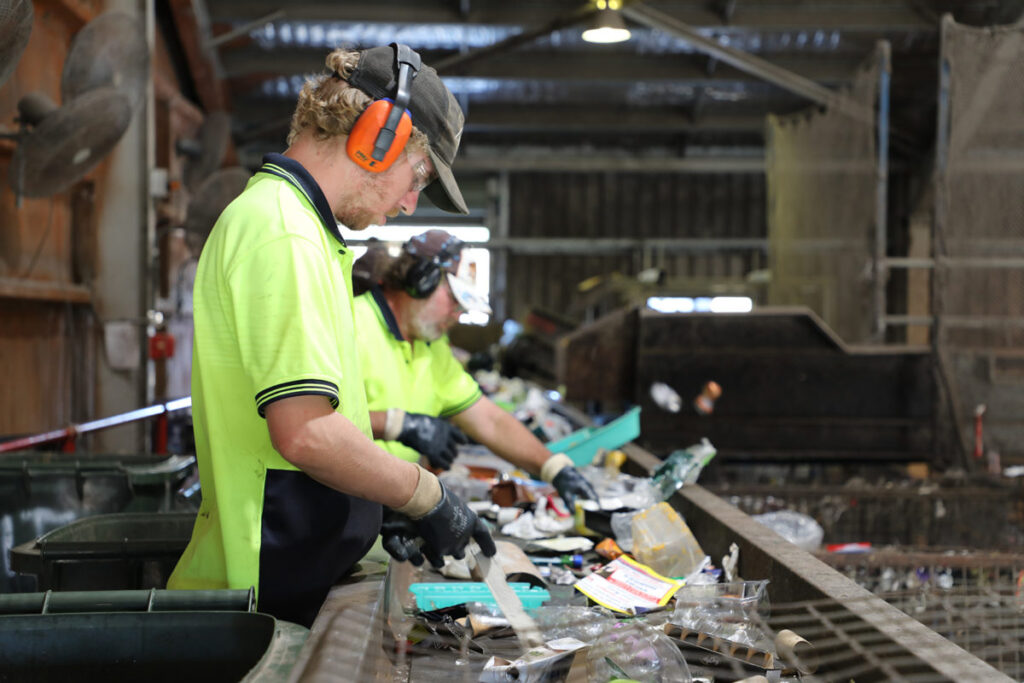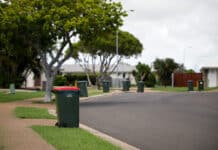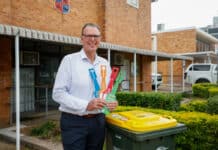
Have you ever wondered what happens to glass bottles once you place them in your yellow-lidded recycle bin?
Bundaberg Regional Council and Impact Community Services are banding together to promote the environmental benefits of crushed glass and how it’s used for projects within the region.
Waste and Recycling portfolio spokesperson Cr Scott Rowleson said crushed glass was quickly replacing the need to use soil and other materials in big projects.
“For example, Council is currently installing a 300mm water main in Burnett Heads,” he said.
“Instead of using soil, a blend of crushed glass and sand is creating the bedding underneath the pipe.”
Crushed glass transformed into backfill
Cr Rowleson said this method of recycling glass products for backfill was being undertaken because of an oversupply of the material coming through from the recently implemented Container Refund Scheme.
“What usually happens to glass is it’s taken away to be recycled into new glass products, however due to so much of it coming through those cashback facilities, there is an oversupply,” he said.
“We have since been finding new ways to use recycled glass from our bins, and this method of crushing is just one way council is dealing with its large volume of glass.
“It also reduces the need for council to find new sources of soil to do the same job.”
Cr Rowleson said each week 130 tonnes of recyclable material was processed by Impact Community Services at the Material Recovery Facility.
“That is equal to 90 passenger vehicles,” he said.
“They hand sort the glass which is then sent off to Rockhampton to a reprocessing facility.”
Cr Rowleson said hand sorting the glass was an important part of the process.
“It means the product is a clean material to start with,” he said.
“After being sorted it goes through a bottle smasher and is then loaded into silos and transported to Rockhampton.
“The glass also goes through a series of processes to remove plastics and labels before it is graded to a 4mm or smaller diameter which is ideal to use as backfilling material.”
Do your bit for the environment
Cr Rowleson said residents could help by making sure all glass bottles were clean before recycling.
“Impact have a tough enough job as it is so anything residents can do to help will be, I’m sure, greatly appreciated,” he said.
- Container return scheme exceeds expectations







